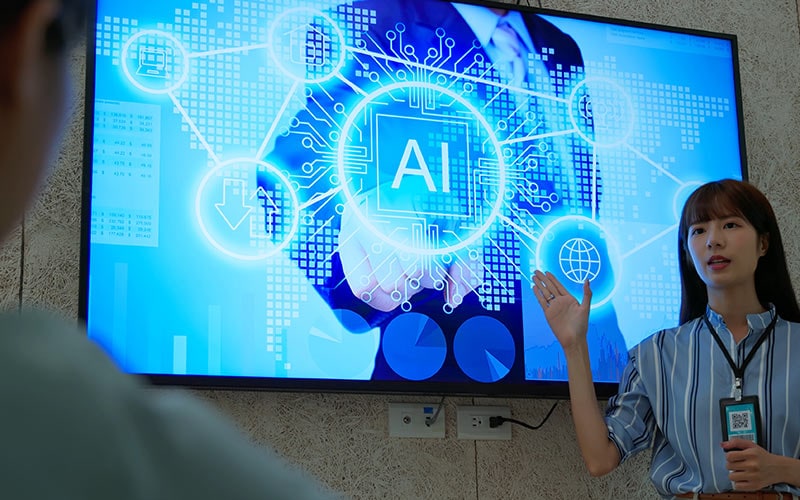The automotive industry has been under pressure from diverse market forces to change itself. The Paris accord, signed in 2015, pushed for a time-bound sunset of internal-combustion engine powered vehicles, to be replaced by battery-run, electric vehicles. Technology in the form of onboard software and intelligence has spurred competition, for the development of autonomy in vehicle driving. On the financial side, the increase in complexity and hence the cost of the vehicle has accelerated the need for commercial models, like subscription-based product usage. In a situation where several vehicle makers struggle, the COVID-19 pandemic has created unprecedented opportunities for transformation.
The disruptions to the automotive industry because of COVID-19 will not last forever. Supply chain stoppages have resulted in shortages of materials to and from factories. The usual workforce has not been available due to lockdowns. These disruptions will need immediate attention. The workforce needs to be trained and reskilled to make new products and to follow standard operating procedures for health and hygiene. Alternate sources of parts supply need to be developed. Digital technologies used in collaboration with other industries and partners have attempted to cover the demand-supply gap and, more importantly, support the development of new products and offers. Ventilators made with 3D printing are one example.
But in the long term, COVID-19 presents opportunities for growth and development in the automotive industry. Based on our research, industry interactions, and points-of-view, the Infosys Knowledge Institute has identified the following trends in the medium to long term (Figure 1).
Figure 1. Post- COVID-19 automotive trends and their outcomes
Source: Infosys Knowledge Institute(T - Trend, O - Outcome)
For manufacturers ready to take calculated risks and make appropriate investments, these trends represent opportunities for growth.
Increase in automobiles’ share for mass urban transportation
Heavy traffic and the global demand for reduction in the carbon footprint have incentivized commuters to use more public transportation instead of private vehicles. Only 12% of Tokyo’s citizens use private motor vehicles for their daily commute. But 70% to 80% of U.S. city residents drive a car to work (Figure 2).
Figure 2: Private urban automobile usage is expected to increase in response to COVID-19
Source: Bureau of transportation Statistics 1 and Wikipedia
The need for social distancing post-COVID-19 will only increase the mode share or the number of automobiles used for daily commute.
Public transportation modes like trains, buses, and trams have large numbers of passengers move in proximity to each other. This type of travel runs counter to social distancing, the desire for which will linger psychologically long after the government mandates end. The need for physical distance between commuters will lead to a reduction in seat utilization. Even a simple arrangement of alternate empty seats will result in 50% utilization of capacity. Even discounting for potentially one-third of the working population working from home, there will still be a surge in demand for private transportation.
Shared cab-hailing services or private vehicles are options to plug this gap. Both are factors to potentially increase demand for car manufacture, specifically smaller vehicles. When normality returns, alternative modes of commute will need to offset any decrease in demand for mass transit modes.
Hygiene cannot be overlooked in the COVID-19 era, providing a window of opportunity to automotive original equipment manufacturers
Automotive research agency J.D. Power talks about a resurgence in car sales in the U.S. after the COVID-19 challenge is over come, based on what it has observed in China.2 When the lockdown ended and the economy restarted in China in March 2020, Tesla witnessed a jump in orders for new car registrations. “In China alone, we sold around 50,000 vehicles again in March. That makes us confident,” said Markus Schaefer, managing board member for production, Daimler. Virtual car selection and online sales are offered by vehicle makers and are increasingly preferred by customers. The COVID-19 crisis has forced consideration of this commercial model by all consumers, not just the millennial, tech-savvy early adopters.
Urban mobility indices highlight affordability, innovation to reduce carbon footprint, usage of technology for physical and digital connectivity and sustainability. Urban planners also cannot afford to overlook hygiene as a factor to avoid infection transmission, and this creates opportunity for automotive original equipment manufacturers.
Overhaul vehicle interiors for social distancing
The need for hygienic interiors is an emerging expectation for both used and new vehicles. Car-makers need to redesign interiors to reduce the possibility of spread of infections. Anti-bacterial materials and partitions between passengers and drivers are examples of new features expected as a basic requirement. Regular disinfection measures and cleaning are necessary to ensure a safe interior environment. Seating arrangements have to be flexible, to change according to the number and type of passengers in each trip. Emergency health care devices in vehicles can save lives. These are opportunities to generate revenue in the aftermarket parts and services segment and to design and include new subsystems for health.
Cab-hailing firm Didi in China has added in-cabin separation to protect its drivers from passengers. Jaguar Land Rover has borrowed ultraviolet light technology from the healthcare industry for its vehicles.3 JLR reported up to 30% reduction in the transmission of superbugs in its vehicles when ultraviolet systems were integrated with the air-conditioning system. “The pandemic will change our perception of how we experience safety and luxury in the future,” said Gorden Wagener, Daimler’s head of design. Safety and luxury can become integrated in vehicle interior design because of COVID-19.
Automate for minimum physical touch
The need to reduce human-to-human interaction is not just in vehicle operation. It goes back all the way to the factories where vehicles are produced. Human-machine interfaces, like keyboards and touchpads that need physical touch to work, need redesign to work contactless, using voice- or gesture- based commands. Cobots, or collaborative robots, working in collaboration with humans need to ensure hygiene whenever physical contact with humans happens.
Automation has been a key productivity driver in the past few decades, along with repeatability and a reduction in variation as a result of increased quality standards. The COVID-19 crisis and aftermath may lead to new environmental, social and governance regulatory requirements that report the amount of human touch involved in each product — the lower the better.
The automotive industry needs to be restructured to go contactless and reduce physical interaction between humans throughout its operations
Automobile companies spend 3% to 5% of their annual revenue for research, which runs into billions of dollars. Connected, autonomous, electric, and hybrid vehicles have been recent areas of focus. Spending on research and development needs a fresh look to reprioritize the allocation of funds and teams following recent COVID-19 trends. Electric vehicles may receive less attention, as the price of crude oil has been on a downward trend following a contraction in demand (50% in April). A recent trend is increased participation in consortiums beyond one’s own industry, working toward common goals, and sharing intellectual property at times for the benefit of the broader society.
Machine toolmaker Makino provides voice-assisted technology to operate its electrical discharge machines with more than 200 commands. Microsoft’s Kinect technology, once popular for video games, is being evaluated for industrial applications, integrated with mixed reality. Robot control is possible with body movement using depth- and motion-sensing technology.
Customer care centers address post-sales queries and take necessary action. Artificial-intelligence-based systems trained with past queries can handle a significant share of the cases autonomously with no human intervention, learning with each new case. Chatbots, voice recognition systems and optical character recognition enable fluid switching between communication channels to provide omni-channel support.
Use commercial models to encourage new vehicle purchase
To jump-start demand, vehicle makers offer several incentives and sweet deals like delayed payment, low interest loans, cash back, and job-loss protection programs. For consumers who cannot afford to buy a car, subscription-based models are an increasingly attractive option. For these customers, manufacturers have separate business units on their own or in collaboration with partners. Toyota’s Kinto is a joint venture that was launched in Japan in 2019 specifically for subscription services of its cars; it was extended to Europe and Asia in 2020.
Volvo launched its Care by Volvo subscription program in 2018 in the U.S. In this model, customers use a car for 24 months with a monthly fee, which includes insurance and maintenance. According to media reports, Volvo achieved its annual subscription target in the first four months. Subscriptions are different from traditional leasing, which has longer tenures, higher prices, and less flexibility for vehicle changes.
Offer incentives to accelerate end of life and exchange of vehicle
Used vehicles nearing their end of life are ripe for new vehicle exchange. Volkswagen in China has announced a cash incentive of 2,000 yuan for new vehicle purchase and 3,000 for exchange of used vehicles.
The European Union enacted an end-of-life vehicles directive in 1997 to handle the 9 million tons of automobile waste produced annually. Its end-of-life vehicle certificate of destruction is an entitlement premium for a new car purchase. The directive also put in place penalties like an annual fee for vehicles not surrendered at the end of their productive life, as well as fines for illegal dismantling.
India has proposed a vehicle scrappage policy, where vehicles at their end of life will be disposed of and the credit given to the owner in the form of coupons. The scrapping document provides proof of eligibility of exception from new, replacement vehicle registration fees.
The Car Allowance Rebate System was launched in 2009 in the U.S. to provide support for the automobile industry. The scheme encouraged trade-ins to get a discount on the purchase of new, more fuel-efficient vehicles. Unfortunately, the program was so popular that it ran out of funds. The U.S. may need such a program again as a growth engine for the industry after the COVID-19 pandemic. Car exchange programs are also an opportunity to reuse valuable materials and establish a profitable circular economy.
Standard & Poor’s global ratings forecast a decline of 15% in global light vehicle sales in 2020 due to COVID-19.4 This is based on government estimates that the pandemic will peak between June and August, with vehicle sales volume falling from 90 million in 2019 to 80 million in 2020. To mitigate this decrease in automobile sales, the recommendations provided above are opportunities for OEMs to overcome the COVID-19 challenge and maintain a healthy scenario for the midterm, while today’s significant uncertainty gradually transitions to a clearer new normal.
References
- U.S. Department of Transportation, Bureau of Transportation Statistics, Transportation Statistics, Annual Report 2018 (Washington, D.C.: 2018).
- Post-coronavirus resurgence of car sales in China potentially bodes well for U.S. market, April 20, 2020, J.D. Power.
- Future Jaguar Land Rover models could help stop the spread of superbugs, March 27, 2019, Jaguar Land Rover.
- COVID-19 will batter global auto sales and credit quality, March 23, 2020, S&P Global.







